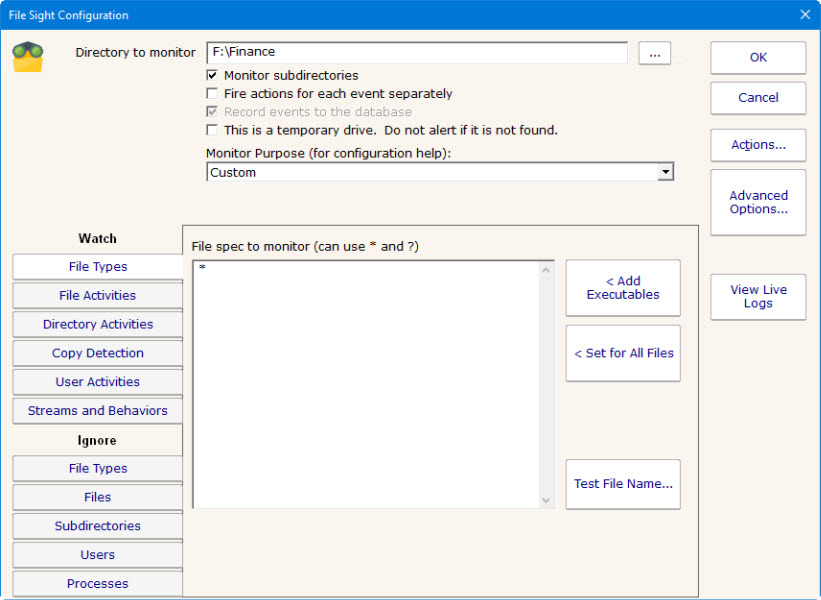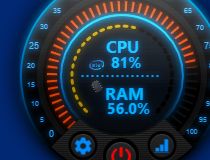Download File Monitor (formerly Filemon) - Clear-cut application which monitors and shows your file system activity, displays mail slots and network volumes, and lets you tweak timestamps. Nagios XI provides complete monitoring of files – including file count, file presence, file size, and more. Implementing effective file monitoring with Nagios offers detection of failed batch jobs, advanced planning for system upgrades, fast detection of storage subsystem problems, early detection of potential future failures and reduced risk of unexpected downtime. The file activity monitor delivers a summary of the requested activity in context; allowing network managers to drill down into the metadata and see details of a specific file, details of each action performed on that file (open, close, read, write, create, etc.) and the time it was performed. Monitors a file or directory for changes. To obtain a GFileMonitor for a file or directory, use gfilemonitor, gfilemonitorfile, or gfilemonitordirectory. To get informed about changes to the file or directory you are monitoring, connect to the “changed” signal. The signal will be emitted in the thread-default main context of the thread that the monitor was.


With the unrelenting news about security breaches, file integrity monitoring (FIM) software has become an indispensable tool for any organization. It helps improve data security, which is important for any company and shouldn’t be ignored.
What Is File Integrity Monitoring?
As opposed to other security measures, FIM solutions are specifically designed to monitor changes in files. The software typically takes a “snapshot” of your system, and then periodically compares that to the system’s current state. When it detects changes to files that suggest unauthorized intrusion (like sudden size changes or access by specific users), it can alert IT or act to minimize the threat.
Read on to see our choices for top file integrity monitoring software on the market today and FIP tool comparisons below.
Top File Integrity Monitoring Software Comparison

Security Event Manager
SolarWinds Security Event Manager is a business-ready option that centralizes all the information you need for effective file integrity monitoring, plus other crucial monitoring tasks. The tool’s SIEM real-time monitoring capabilities can quickly alert you to registry, file, and folder activity.
This tool shows which users are responsible for which file changes and any additional user activities, allowing you to create pinpointed alerts and reports to support accelerated incident response measures. This software also goes well beyond the file integrity monitoring function—but if you’re looking for a comprehensive file, log, and threat monitoring tool, this would be my pick. It’s easy to use and customizable—for instance, the homepage sidebar shows you how many change events have occurred under the Change Management header, allowing you to filter events by keyword when something looks off. SolarWinds Security Event Manager has multiple compliance features available out of the box, making it audit-ready and perfect for regulated industries and sensitive information.
OSSEC
I know plenty of people who start here, and that’s fine—for a while. OSSEC is an open-source intrusion detection system for Linux® and Mac OS X. It also has specific file-monitoring functionality called “Syscheck.” It runs by default every six hours to check for changes to the checksums of key files. It’s designed to reduce CPU usage, which means it’s a potential option for organizations that want an FIM solution with a small footprint. However, OSSEC is only available for Windows in server-agent mode, which means no root-kit detection on Windows. In addition, you’ll end up dealing with all the time-sucking issues that come with open-source programs. Most businesses will soon opt for a paid solution instead.
Server & Application Monitor
SolarWinds Server & Application Monitor is another great option for monitoring your system, as it can monitor across Windows, Linux, on-premises, and various cloud storage options. It has templates for some 1,200 vendor applications, servers, databases, and infrastructure, so you can really ensure file security for just about any part of your overall network, all from one straightforward interface.
Besides prepackaged alerts and reports, I think you’ll find that SolarWinds tools are really built for customization. Certainly, a part of file integrity monitoring is ensuring system health and appropriate storage performance, and this is one of the best tools for the job.
Trustwave Endpoint Protection

This cloud-based solution is useful for file integrity monitoring but is built (and priced) for more. This could be a useful option if you’re looking for features like log monitoring, weekly critical file comparison, incident management, and reporting. This tool does offer effective overall visibility across several data sources, so enterprises may find this a useful option. But if you’re looking just to add pinpointed file integrity monitoring to your capabilities, you don’t need a tool this complex and pricey.
Tripwire
Tripwire is another enterprise product, known for its intrusion detection system but also offering robust file integrity monitoring (FIM) capabilities. What makes Tripwire stand out is its user-friendly interface and out-of-the-box functionality. Easy-to-read graphs identify changes by platform and show whether they were authorized or not. Changes can then be examined on a granular level to see the date, time, user, and other pertinent information. Tripwire comes with lots of built-in compliance parameters, making it great for anyone pursuing CIS, NIST, PCI DSS, and ISO guidelines, among others.
QualysGuard FIM
The Qualys Cloud Agent is a robust and well-known product. It can quickly note file changes, and lets you set notifications for entire directories or at the file level. You can catch changes like file creation, renaming, and deletion. It’s a cloud solution, which most enterprises are looking for these days. This product promises a lot, but some users have found that certain features, like customization options and reporting, are more limited than they need.
Who Should Implement File Integrity Monitoring?
File Monitor Sysinternals
Just about any business can benefit from investing in FIM software, but for many, choosing the best file integrity monitoring software may be a requirement:
File Monitor Windows
- Regulated Industries: A FIM solution is required or strongly indicated by certain standards like PCI DSS, Sarbanes-Oxley, or HIPAA. So, if you’re in the financial or health care sectors, or process credit or debit cards, FIM is non-negotiable.
- Sensitive Information: Any organization working with sensitive information should consider file integrity monitoring (FIM). That includes client data as well as trade secrets. Though it might not be required, it is certainly advantageous to your business and could help avoid a PR disaster.
- Businesses of Any Size: Enterprises and medium-sized businesses alike have long known the importance of FIM software, but being a small business is no longer a reason to skip it either. With the range of options and the growing threat of hacks, there are FIM solutions to fit every need and budget.
Choosing the Best FIM Tool
For businesses managing many critical files, it’s worth it to choose the best file integrity monitoring software you can afford. For businesses ready to centralize their data to benefit from effective file integrity monitoring, Security Event Manager is my pick for its SIEM, monitoring, and alerting capabilities for registry, file, and folder activity.
